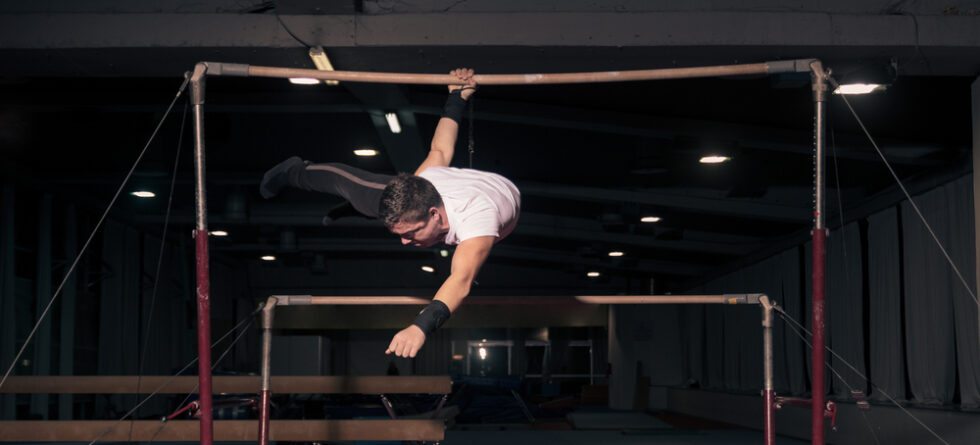Yes, gymnastics is associated with a relatively high rate of injuries compared to many other sports. The dynamic and acrobatic nature of gymnastics, combined with the high-intensity training and performance demands, can increase the risk of various types of injuries among gymnasts.
Some factors contributing to the incidence of injuries in gymnastics include…
- High-Impact Landings – Gymnastics routines often involve jumps, flips, twists, and dismounts from apparatus such as balance beams, bars, and vaults. The impact forces generated during landings can place stress on the musculoskeletal system, increasing the risk of injuries to the lower extremities, spine, and joints.
- Repetitive Movements – Gymnasts perform repetitive movements and routines during training and competition, which can lead to overuse injuries such as stress fractures, tendonitis, and muscle strains. The cumulative stress on the body from repetitive training can contribute to chronic injuries over time.
- Acrobatics and Tumbling – The acrobatic and tumbling elements of gymnastics require precise timing, coordination, and body control. Mistimed landings or improper technique during flips, somersaults, and twists can result in falls or collisions, leading to injuries such as sprains, strains, and contusions.
- Equipment Use – Gripping bars, rings, and other apparatus places additional stress on the hands, wrists, and upper body. Inadequate technique or equipment malfunctions can increase the risk of injuries such as wrist sprains, ligament tears, and dislocations.
- Training Intensity and Volume – Elite gymnasts often train for several hours each day, performing high-intensity conditioning exercises, strength training, and skill drills. Overtraining or insufficient rest and recovery between sessions can predispose gymnasts to fatigue-related injuries, including muscle strains, ligament sprains, and overuse syndromes.
- Psychological Stress – The pressure to perform at a high level in gymnastics, coupled with the demands of training and competition, can contribute to psychological stress and mental fatigue. Stress-related factors may increase the risk of injuries by impairing concentration, decision-making, and coordination during routines.
While injuries are inherent to the sport of gymnastics, there are measures that can be taken to reduce the risk and severity of injuries, including…
- Proper warm-up and stretching before training or competition to prepare the body for activity and improve flexibility.
- Gradual progression of training intensity and difficulty to allow the body to adapt to increasing demands.
- Emphasis on proper technique and form during gymnastics maneuvers to minimize the risk of falls or collisions.
- Adequate rest and recovery between training sessions to allow for tissue repair and prevent overuse injuries.
- Supervision and guidance from qualified coaches and trainers to ensure safe training practices and equipment use.
Despite the risk of injuries, many gymnasts find the benefits of the sport, including physical fitness, skill development, and personal growth, to outweigh the potential risks. By implementing appropriate safety measures and injury prevention strategies, gymnasts can enjoy the sport safely and effectively.




